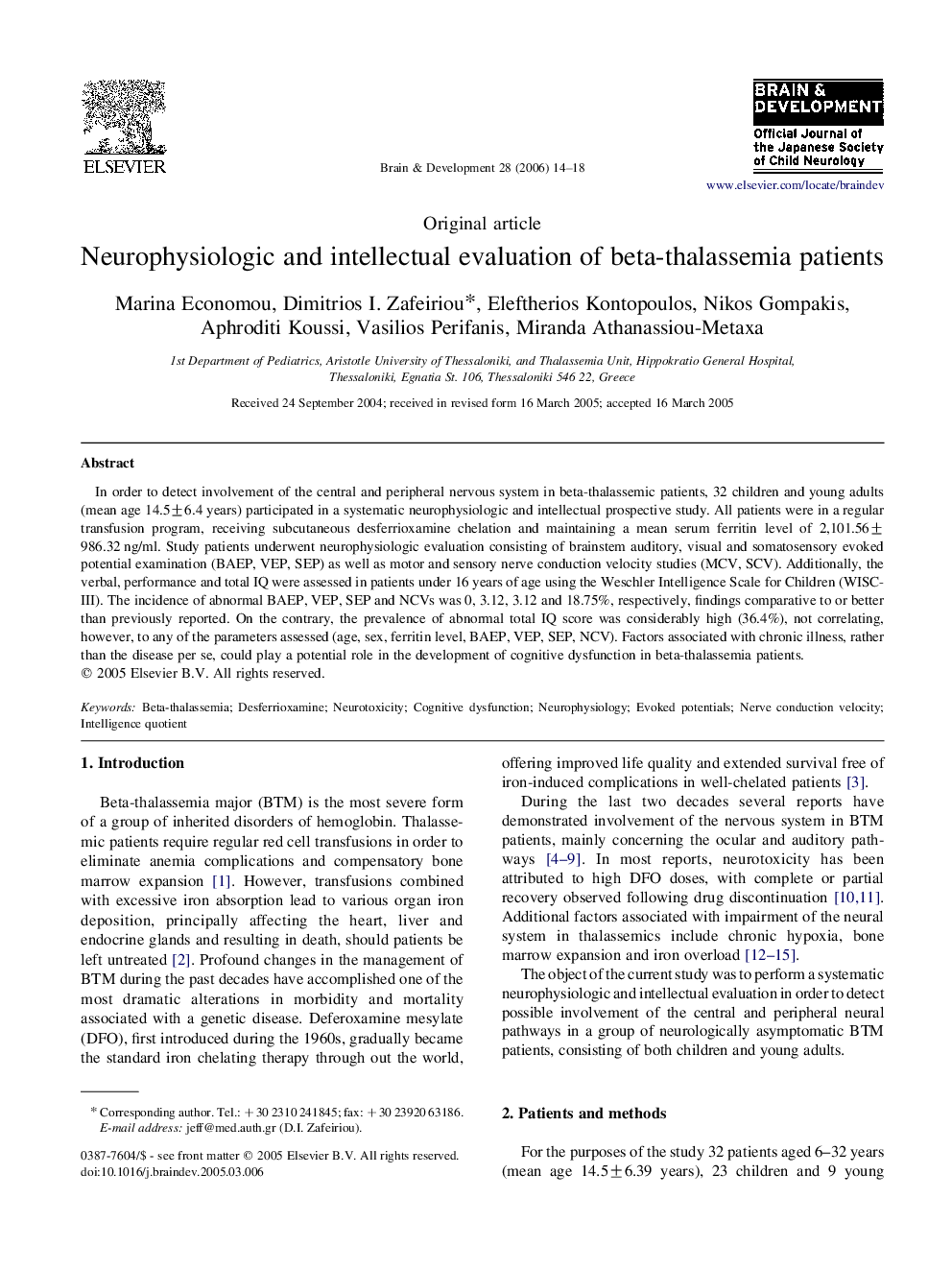| Article ID | Journal | Published Year | Pages | File Type |
|---|---|---|---|---|
| 3038511 | Brain and Development | 2006 | 5 Pages |
In order to detect involvement of the central and peripheral nervous system in beta-thalassemic patients, 32 children and young adults (mean age 14.5±6.4 years) participated in a systematic neurophysiologic and intellectual prospective study. All patients were in a regular transfusion program, receiving subcutaneous desferrioxamine chelation and maintaining a mean serum ferritin level of 2,101.56±986.32 ng/ml. Study patients underwent neurophysiologic evaluation consisting of brainstem auditory, visual and somatosensory evoked potential examination (BAEP, VEP, SEP) as well as motor and sensory nerve conduction velocity studies (MCV, SCV). Additionally, the verbal, performance and total IQ were assessed in patients under 16 years of age using the Weschler Intelligence Scale for Children (WISC-III). The incidence of abnormal BAEP, VEP, SEP and NCVs was 0, 3.12, 3.12 and 18.75%, respectively, findings comparative to or better than previously reported. On the contrary, the prevalence of abnormal total IQ score was considerably high (36.4%), not correlating, however, to any of the parameters assessed (age, sex, ferritin level, BAEP, VEP, SEP, NCV). Factors associated with chronic illness, rather than the disease per se, could play a potential role in the development of cognitive dysfunction in beta-thalassemia patients.
